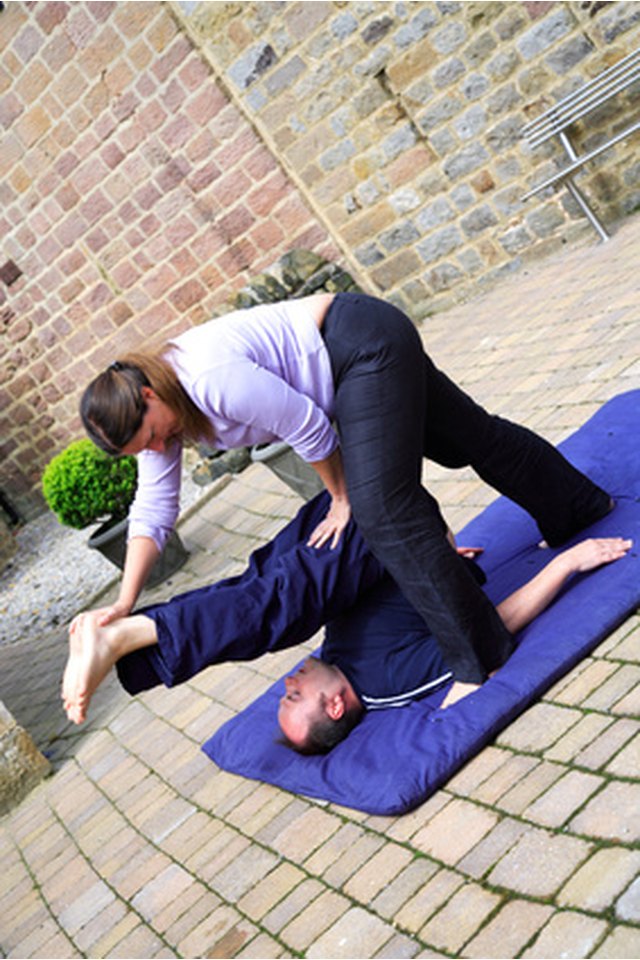Rhythmic Stabilization Exercises

Rhythmic stabilization exercises are frequently used in the therapeutic realm to re-educate the muscles surrounding a particular injured joint or set of joints to react to random movement that may occur in activities of daily living. In the shoulder, the rotator cuff musculature serves as a dynamic stabilizer of the joint by pulling the bone of the upper arm closer to the shoulder blade, establishing a "packed" and stable position. Though commonplace in injured athletes' rehabilitation, rhythmic stabilization can be an effective means of training in healthy populations for the shoulder girdle and the spine.
Rhythmic Stabilization for the Shoulder
To integrate rhythmic stabilization for the shoulder in athletic populations, strength coach Eric Cressey advocates using the quadruped rhythmic stabilization. Begin on all fours, called quadruped, elbows straight, with one hand placed atop a medicine ball or basketball. Pull your shoulder blade back and down as if you were trying to put it into your back pocket. Have your partner randomly push your wrist in any direction. Immediately make the equal and opposite movement to return your arms to the starting position. Repeat on the other side. Perform two sets of 15 seconds on each arm initially and progress to three sets of 30 seconds.
Rhythmic Stabilization for the Spine
Dr. Stuart McGill, a low back specialist, utilizes rhythmic stabilization to teach the muscles that support the spine to fire reflexively so they are prepared for any random motion. Begin by sitting into an athletic position with your hips back, knees slightly flexed and in line with your shoelaces, and head and chest facing directly forward. Clasp your hands together and hold them at chest level. Have your partner then randomly push your hands in any direction while you respond immediately in equal and opposite directions. Be sure to breathe comfortably during the exchange. Start with two sets of 15 seconds in athletic base position and progress to two sets of 30 seconds in a split-stance position with one foot ahead of the other.
Integrated Rhythmic Stabilization
Physical therapist Ross Nakaji, OCS, SCS, CSCS, integrates rhythmic stabilization of the shoulder and of the spine by performing side-bridging perturbations. Assume a lateral plank position with your right elbow on the floor and your left arm held straight up toward the ceiling. Pull your left shoulder blade back and down, breathe easily, and have your partner randomly push your arm in any direction he desires. Respond to the perturbations immediately and return to the starting position while maintaining your side plank posture throughout the drill. Repeat on the other side. Initially, hold each bridge position for two sets of 10 seconds on each side and progress to doing two sets of 30 seconds.
References
Writer Bio
A writer since 2004, Carson Boddicker has been published in the "Arizona Daily Sun" and on SportsRehabExpert.com, ResearchReview.com and StrengthCoach.com. Currently he is editing his first academic paper on functional movement and injury likelihood. Boddicker is pursuing a double bachelor's degree in medical biology and sports physiology from Northern Arizona University.
